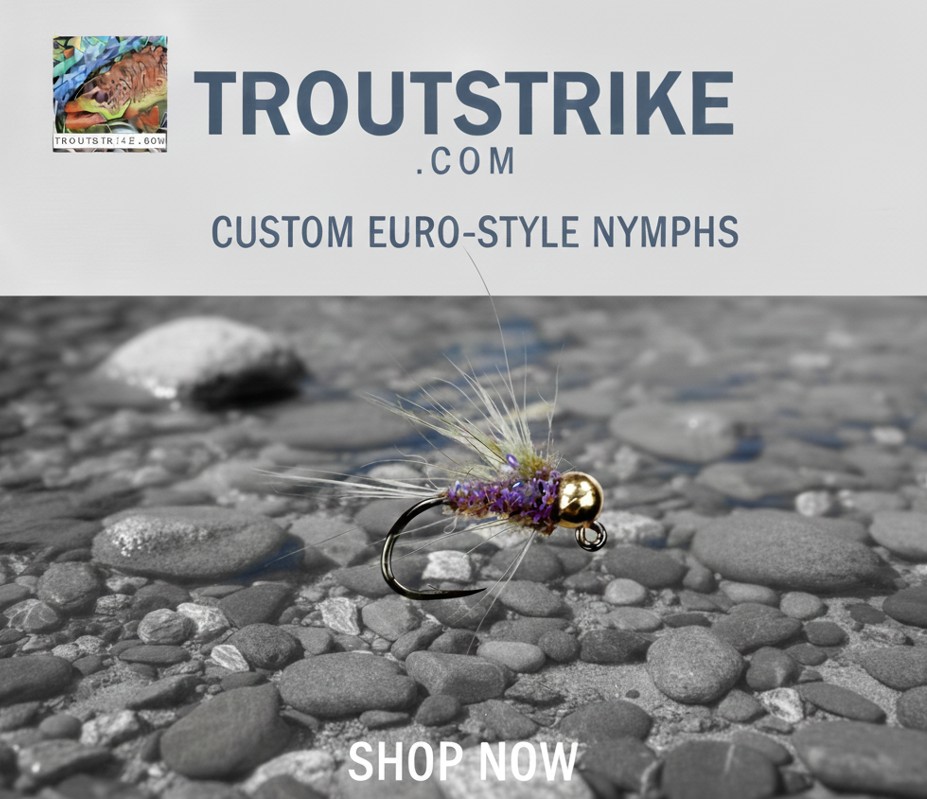If you are only catching trout when you feel the strike, you aren’t catching as many as you could be. Learning to read the sighter built into your euro nymphing leader helps you to see the strikes you don’t feel. Trout often take nymphs subtly and can go undetected. Trout spend their lives in heavy currents that provide them with little time to inspect their food. So, they are adept tasting something gently (like your nymph) and spitting it out when they realize it’s not food (like your nymph).
Watch the eight second clip of Joe Humphrey’s video that shows how trout do this:
Reading Sighter in Your Euro Nymphing Leader
Your sighter provides you with a lot of data. It helps you understand what your nymphs are doing below the surface. Reading your sighter helps you to understand if your nymphs are drifting at the proper depth and speed. Your sighter also helps you to detect subtle takes. Carefully watch my sighter in the clip below and notice what happens when I don’t react in time.
Had I noticed the slight hesitation of the sighter just a split second earlier, I likely would have hooked that fish. Many of our misses are a result of detecting the strike too late. In some instances, we miss them all together.
It’s More than Just the Sighter
When you begin tight line or euro nymphing, your focus should be on the sighter. As you progress, you will begin to observe other parts of the the entire system. You will begin to focus on the angle of the sighter, its sag, its speed compared to the current, and the tippet below it. Domenick Swentowsky from troutbitten.com refers to this as, “seeing beyond the sighter.”
In this next video, I’m fishing a deep run. So, I have a heavy point fly (3.2 mm tungsten) with a smaller dropper fly (2.8 mm). The weight of my flies is helping me to keep a tight sighter through the entire drift. The angle of my sighter is not perfectly vertical because I’m fishing at a distance, but it’s steep enough to not be creating drag on the flies. I’m fishing a 10 foot rod, which helps me have a little more range when nymphing. Try to notice everything you can about the sighter in this next video to determine what I saw to detect the strike.
A Sixth Sense?
Was it my sixth sense that helped me detect that strike? No. (Although there are days that would be helpful.). My previous casts helped me in this case. There was a slight hesitation at the time of the strike that I had not seen in the casts I had made prior to this one. When I noticed that hesitation, I did a hook set, and the fish was there. Hook sets often don’t result in a hook up, but I’ve learned to trust myself with them. It’s all part of the game.
Listen to the great Joe Humphreys explain this. Then watch him connect on a fish by hook setting when he anticipated a trout would strike (Mr. Humpfreys truly developed a “sixth sense”).
The first time I ever saw that clip of Mr. Humpfreys hook setting based on where he thought the fish would take his fly, I was truly astonished. Since then, I’ve tried that no less than a thousand times and am still waiting for it to work! I’m no Joe Humpfreys, but I am not afraid to hook set if I even think I see something with my sighter. I’ll need to spend a lot more time on the water before I ever develop a “sixth sense.” But that’s not going to keep me from hook setting!
Putting it All Together
There are many factors that will impact your ability to see the strike. Having a sighter built directly into your leader is an important tool, but it’s not everything. Adding a sighter to your leader is not going to help you catch more fish unless you learn to incorporate it into an effective presentation. Being able to see the strike requires actually getting some strikes! A solid presentation begins with a good cast and is followed by immediate line control to become tight to the sighter. When you are tight to the sighter, you eliminate having any slack in the system. Slack in your system will make it almost impossible to see a subtle strike, especially early in the drift, when trout often strike. The last video shows a tight to the sighter presentation.
Final Thoughts
Incorporating a sighter into your leader is only a start in helping you see more strikes. Start by learning to focus on your sighter through your drifts. As you progress, start to “look beyond the sighter” and learn to understand the data it is providing you. Hook set any time you think your sighter is telling you something has interrupted your drift. Start to understand how to use your sighter as part of your entire system. As you gain experience with this, you just may develop a “sixth sense” too. But in the meantime, focus on putting it all together by starting with a good cast, managing your line to eliminate slack, and staying tight to the sighter.
Spend more time on the water!
Jeff Smecker







7 thoughts on “Video Post: Are You Seeing the Strike?”